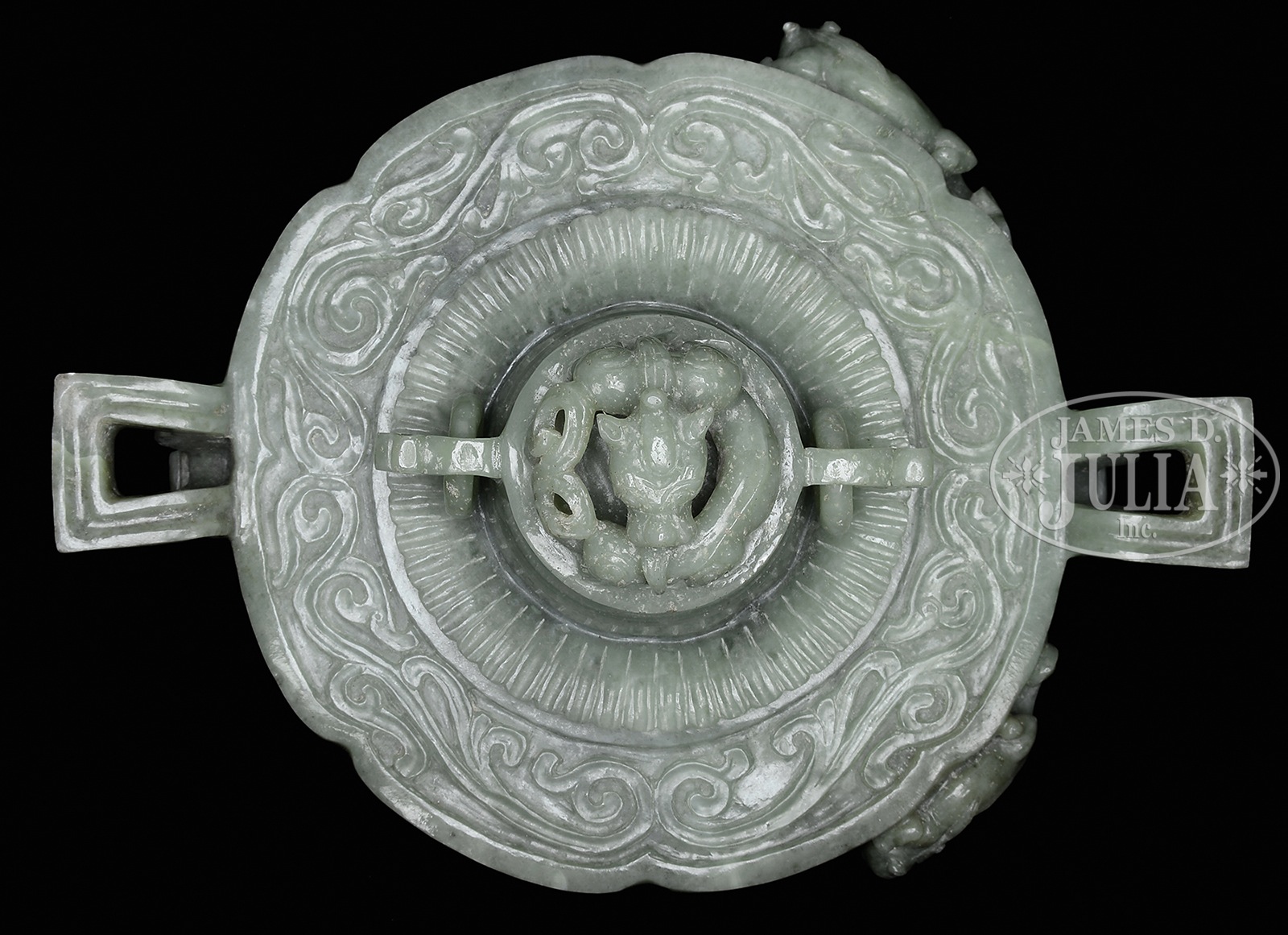| Image | Lot | Price | Description |
|
56
|
$3,081.00
|
MASSIVE SCULPTED ARCHAISTIC GUI.19th-20th century, China. Nephrite: grayish yellow-green with darker and lighter patches and overall mottling. Knob added to lid. With precedents in early Western Zhou period (11th-early 10th century b.c.) bronzes, such as the well-known Metropolitan Museum example (Roberts, p. 16, #8), or the Beijing Cultural Relics Bureau example with its high stand and compound dragon handles (Bagley, p. 231, #57; and also Beijing, #44), this massive scalloped edge gui has a complex structure and a highly baroque appearance. The form was one of the three favorite bronze forms of the scholar’s studio of the later Ming, and often imitated at that time in updated metal versions as well as in other media such as small jades (Moss, pp. 287-8, #142; Li, #51). Bronze precedents for the Qing jade gui are illustrated in the Xiqing gu jian (Lawton, p. 54, fig. 5 and figs. 11-12), one of the Qing catalogues commissioned by the Qianlong emperor, and close copies of these metal works appear in jades dated to the 18th century. The lid of this jade gui, with its elaborate chrysanthemum collar and two relief chilong (immature dragons), repeats certain earlier Qing versions (lp, pp. 254-5, #227; Hai, p. 200, #198), and the thick independently moving ring handles are a feature much favored in the 18th century, when they were first accomplished with relative ease by the jade workshop artists (Watt Seattle, p. 121). A dragon-turtle, strutting around the base, carries a smoking incense vase on its back with a bat caught in the smoke; there are also two chilong carved in high relief on the base, repeating a theme found first on the lid. The squat flat-bottomed base has a low polish, and a shaped interior ridge for secure placement of the lid; the interior is essentially unpolished. The base, with its deeply-carved large scale double bands of decor, the complex set of handles for lid and base, and most of all the freestanding carving of the animal built out from the base of the vessel, however, proclaim the taste for large, elaborate, and technologically proficient works characteristic of the late Qing, including the court of the Dowager Empress. Reference: The Yangtze River Collection, Later Chinese Jades published by Helga Wall-Apelt, 1993. SIZE: 8.25″ x 12.25″ x 7.5″. (21 x 31.1 x 19.1 cm.) CONDITION: Well carved. Good overall. 9-94994 (3,000-5,000) – Lot 56
Auction: FAAA - Wall-Apelt Collection - March 2015 Please Note: All prices include the hammer price plus the buyer’s premium, which is paid by the buyer as part of the purchase price. The prices noted here after the auction are considered unofficial and do not become official until after the 46th day. |










